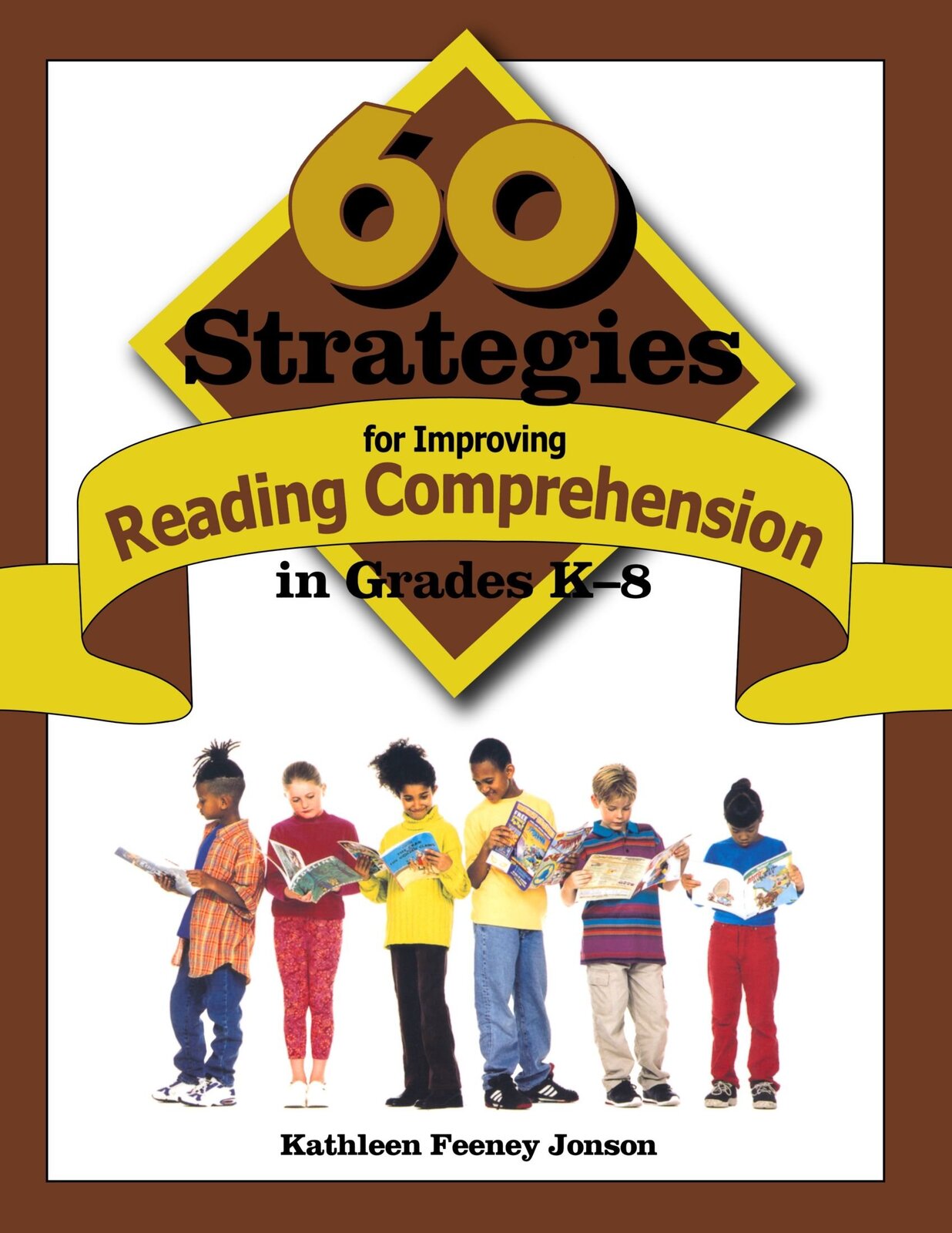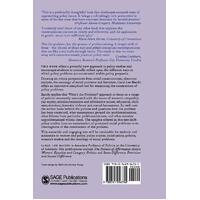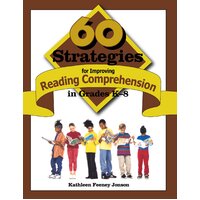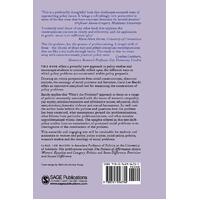60 Strategies for Improving Reading Comprehension in Grades K-8
Author: Kathleen Feeney JonsonPublisher: SAGE Publications IncCategory: Primary & Middle Schools, Primary & Middle Schools, Teaching Skills & Techniques, Teaching Skills & Techniques, Teaching Of A Specific Subject, Teaching Of A Specific SubjectBook Format: PaperbackThis book, designed as a reference tool, fills a void by providing a concise overview of the teaching practices of literacy, helping readers examine and evaluate teaching strategies and techniques in the areas of reading, writing, listening, speaking, and visualizing.
Jonson's book follows a user-friendly format that includes:
o Names of specific strategies
o Who would use a given strategy
o When and why a strategy should be used
o How a strategy should be implemented
o Alternative implementation ideas
o Supplies required to implement the strategies
o Figures and illustrations
Jonson brings more than 30 years of experience as a teacher, reading specialist, principal, staff developer, and professor of teacher education to the project. This excellent resource not only synthesizes the current research and theory of best instructional practices, but also presents information in a clear, logical, and accessible manner for practitioners.
In her 40 years as an educator, Kathleen Feeney Jonson, Professor Emeritus, has been a teacher, taught director of staff development, principal, director of curriculum and instruction, and university faculty. She conducted numerous workshops for teachers and administrators on such topics as reading comprehension strategies, writing process, portfolio assessment, peer coaching, and beginning teacher assistance programs. Until her retirement in summer 2009, Jonson was professor of education and coordinator of the Master in Arts in Teaching Reading program at the University of San Francisco's School of Education. She published three books with Corwin Press, including The New Elementary Teacher's Handbook (1st edition 1997, 2nd edition 2001), Being an Effective Mentor: How to Help Beginning Teachers Succeed (1st edition 2002, 2nd edition 2007), and 60 Strategies for Improving Reading Comprehension in Grades K-8 (2006).
Preface
About the Author
Strategy 1: ABC Book
Strategy 2: Anticipation Guide
Strategy 3: Bio Poem
Strategy 4: Book Box
Strategy 5: Brainstorming
Strategy 6: Bumper Stickers
Strategy 7: Central Story Problem
Strategy 8: Character Bag
Strategy 9: Character Mapping
Strategy 10: Creating Chapter Titles
Strategy 11: Crossword Puzzle
Strategy 12: Cubing
Strategy 13: Directed Reading Thinking Activity
Strategy 14: Double-Entry Journal
Strategy 15: Exclusion Brainstorming
Strategy 16: Fishbowl
Strategy 17: Found Poem
Strategy 18: Four-Corners Debate
Strategy 19: Gallery Walk
Strategy 20: Grand Conversation
Strategy 21: Guided Imagery
Strategy 22: Hot Seat
Strategy 23: Interior Monologue
Strategy 24: Jigsaw
Strategy 25: K-W-L Chart
Strategy 26: Learning Logs
Strategy 27: Life Experience
Strategy 28: Literacy Quilt
Strategy 29: Literacy Sociogram
Strategy 30: Literature Circles
Strategy 31: Mind Mapping
Strategy 32: Open Mind Character Analysis
Strategy 33: Paired Retellings
Strategy 34: Pick-A-Pal
Strategy 35: Plot Profile
Strategy 36: P-M-I Evaluation (Pluses-Minuses-Interesting Aspects)
Strategy 37: Quaker Reading
Strategy 38: Question-Answer Relationships
Strategy 39: Questioning the Author
Strategy 40: Quickwriting
Strategy 41: Readers' Theater
Strategy 42: Read-Pair-Share
Strategy 43: Reciprocal Questioning (ReQuest)
Strategy 44: Response Log
Strategy 45: Semantic Mapping
Strategy 46: Sketch-to-Stretch
Strategy 47: SQ3R (Survey-Question-Read-Recite-Review)
Strategy 48: Stop-and-React
Strategy 49: Storyboard
Strategy 50: Story Frame
Strategy 51: Story Mapping
Strategy 52: Story Prediction Guide
Strategy 53: Story Pyramid
Strategy 54: Summary Hand
Strategy 55: Tableau
Strategy 56: Tea Party
Strategy 57: Think-Aloud Protocol
Strategy 58: Think-of-Three
Strategy 59: Venn Diagram
Strategy 60: Yellow Stickies
Resource I: Strategies Recommended by Grade Level
Resource II: Elements Addressed Through Strategies
Resource III: Strategies Used Before, During, and After Reading
Resource IV: Meta-Strategies Addressed
Index
Table Of Contents
Preface About the Author Strategy 1: ABC Book Strategy 2: Anticipation Guide Strategy 3: Bio Poem Strategy 4: Book Box Strategy 5: Brainstorming Strategy 6: Bumper Stickers Strategy 7: Central Story Problem Strategy 8: Character Bag Strategy 9: Character Mapping Strategy 10: Creating Chapter Titles Strategy 11: Crossword Puzzle Strategy 12: Cubing Strategy 13: Directed Reading Thinking Activity Strategy 14: Double-Entry Journal Strategy 15: Exclusion Brainstorming Strategy 16: Fishbowl Strategy 17: Found Poem Strategy 18: Four-Corners Debate Strategy 19: Gallery Walk Strategy 20: Grand Conversation Strategy 21: Guided Imagery Strategy 22: Hot Seat Strategy 23: Interior Monologue Strategy 24: Jigsaw Strategy 25: K-W-L Chart Strategy 26: Learning Logs Strategy 27: Life Experience Strategy 28: Literacy Quilt Strategy 29: Literacy Sociogram Strategy 30: Literature Circles Strategy 31: Mind Mapping Strategy 32: Open Mind Character Analysis Strategy 33: Paired Retellings Strategy 34: Pick-A-Pal Strategy 35: Plot Profile Strategy 36: P-M-I Evaluation (Pluses-Minuses-Interesting Aspects) Strategy 37: Quaker Reading Strategy 38: Question-Answer Relationships Strategy 39: Questioning the Author Strategy 40: Quickwriting Strategy 41: Readers' Theater Strategy 42: Read-Pair-Share Strategy 43: Reciprocal Questioning (ReQuest) Strategy 44: Response Log Strategy 45: Semantic Mapping Strategy 46: Sketch-to-Stretch Strategy 47: SQ3R (Survey-Question-Read-Recite-Review) Strategy 48: Stop-and-React Strategy 49: Storyboard Strategy 50: Story Frame Strategy 51: Story Mapping Strategy 52: Story Prediction Guide Strategy 53: Story Pyramid Strategy 54: Summary Hand Strategy 55: Tableau Strategy 56: Tea Party Strategy 57: Think-Aloud Protocol Strategy 58: Think-of-Three Strategy 59: Venn Diagram Strategy 60: Yellow Stickies Resource I: Strategies Recommended by Grade Level Resource II: Elements Addressed Through Strategies Resource III: Strategies Used Before, During, and After Reading Resource IV: Meta-Strategies Addressed IndexAbout Kathleen F. Jonson
In her 40 years as an educator, Kathleen Feeney Jonson, Professor Emeritus, has been a teacher, taught director of staff development, principal, director of curriculum and instruction, and university faculty. She conducted numerous workshops for teachers and administrators on such topics as reading comprehension strategies, writing process, portfolio assessment, peer coaching, and beginning teacher assistance programs. Until her retirement in summer 2009, Jonson was professor of education and coordinator of the Master in Arts in Teaching Reading program at the University of San Francisco's School of Education. She published three books with Corwin Press, including The New Elementary Teacher's Handbook (1st edition 1997, 2nd edition 2001), Being an Effective Mentor: How to Help Beginning Teachers Succeed (1st edition 2002, 2nd edition 2007), and 60 Strategies for Improving Reading Comprehension in Grades K-8 (2006).| SKU | BK-9780761988380 |
| Barcode # | 9780761988380 |
| Brand | SAGE Publications Inc |
| Artist / Author | Kathleen Feeney Jonson |
| Shipping Weight | 0.5700kg |
| Shipping Width | 0.210m |
| Shipping Height | 0.020m |
| Shipping Length | 0.280m |
| Assembled Length | 27.900m |
| Assembled Height | 1.500m |
| Assembled Width | 20.800m |
| Type | Paperback |






